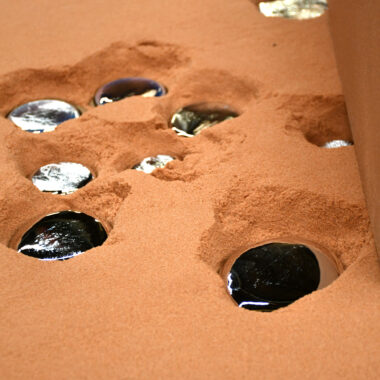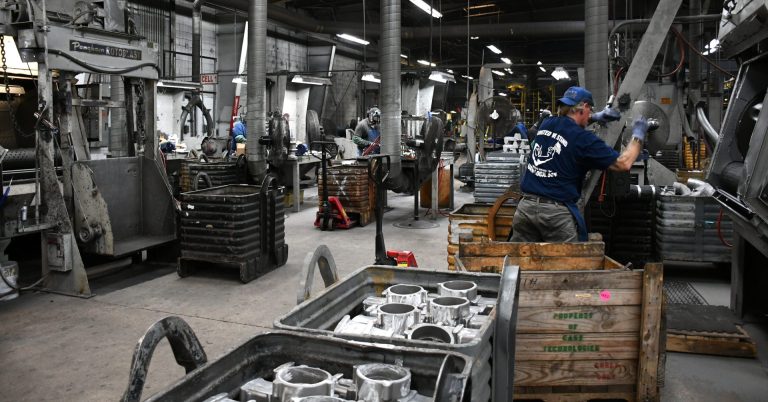Checking out the Craft: All About Aluminum Casting Techniques
Wiki Article
Light Weight Aluminum Spreading Mastery: Methods and Tools for Phenomenal Outcomes
Mastering the art of light weight aluminum spreading requires a fragile balance of accuracy, method, and the use of specialized devices. As we check out the intricate strategies and tools entailed in light weight aluminum casting proficiency, one can not ignore the relevance of advanced putting and cooling approaches that can raise the last result.
Relevance of Proper Melting Techniques
Utilizing accurate temperature control throughout the melting process is extremely important in ensuring the quality and integrity of aluminum spreadings. The melting of light weight aluminum is a critical action in the casting process, as it straight influences the last properties of the casted components. Correct melting strategies are important to attain the wanted metallurgical framework, mechanical buildings, and surface area finish of the aluminum parts.
Furthermore, tracking and changing the thaw temperature level throughout the procedure aid prevent overheating, which can cause grain growth and impact the general high quality of the light weight aluminum spreading. Abiding by specific melting techniques not only enhances the quality of the final product however likewise improves the efficiency and cost-effectiveness of the spreading process.
Vital Mold And Mildew Prep Work Tips
Correct prep work of mold and mildews is an essential element in the light weight aluminum spreading procedure, making sure the effective replication of elaborate details and dimensions in the last casted parts. The critical mold and mildew prep work steps begin with selecting the ideal molding product, such as sand or investment casting materials, based upon the ins and out of the component and preferred finish. Before putting the molten aluminum, the mold and mildew tooth cavity need to be carefully cleaned and dried out to avoid flaws in the casting. Additionally, using mold coverings can help boost surface finish and lengthen mold life.Additionally, proper gating and risering style are important in mold and mildew preparation to make sure sound castings with marginal problems like porosity and contraction. The gating system promotes the flow of liquified steel into the mold and mildew cavity, while risers assist protect against shrinking by giving additional molten steel as the casting solidifies. Mindful consideration of these facets during mold prep work significantly contributes to the top quality and integrity of the final light weight aluminum cast parts.
Advanced Pouring and Cooling Techniques
Applying advanced pouring and cooling approaches is pivotal in optimizing the aluminum spreading procedure for boosted efficiency and high quality results. Making use of strategies such as vacuum casting can considerably lower porosity in the end product, causing boosted mechanical residential or commercial properties. By evacuating the air from the mold tooth cavity prior to putting, the threat of gas entrapment is decreased, causing a denser advice and more structurally audio spreading.Furthermore, employing controlled air conditioning methods, such as water quenching or air cooling, can influence the product's microstructure and mechanical characteristics (about aluminum casting). Rapid air conditioning can aid attain better grain frameworks and improved mechanical buildings, making the actors light weight aluminum better for applications needing high strength and sturdiness
In addition, applying directional solidification strategies, where the casting solidifies considerably from one end to one more, can help minimize interior defects and boost general part honesty. By very carefully managing the temperature level differentials during solidification, the formation of contraction porosity and hot rips can be reduced, leading to better spreadings with improved mechanical a fantastic read efficiency.
Vital Devices for Aluminum Spreading
Enhancing the effectiveness and quality results of aluminum casting procedures relies greatly on the usage of details tools made to optimize different aspects of the casting procedure. One important device for aluminum casting is the crucible. Crucibles are containers made from products like clay-graphite or silicon carbide that stand up to the heats required for melting aluminum. Crucibles can be found in numerous sizes to suit different casting quantities and are essential for melting and putting the liquified light weight aluminum.An additional this post indispensable tool is the mold and mildew. Mold and mildews can be made from products like steel, plaster, or sand and are used to shape the molten aluminum into the preferred kind. about aluminum casting. Proper mold style and products are essential for attaining precise casting dimensions and surface coatings
In enhancement to crucibles and mold and mildews, a heating system is an essential device for light weight aluminum spreading. Heaters warm the steel to its melting factor, guaranteeing it remains in a state all set for spreading. Crucial for preserving consistent temperatures and guaranteeing the aluminum remains liquified, heaters are available in various kinds, such as electrical, gas, or induction heating systems, each with its benefits for particular casting needs.
Finishing Touches and Quality Checks
Upon finishing the spreading procedure, precise attention to finishing touches and strenuous top quality checks is extremely important to make certain the honesty and precision of the aluminum parts - about aluminum casting. Completing touches involve the removal of any excess product, such as flash, gating systems, or harsh edges, to attain the preferred final form and surface area high quality. This step usually consists of processes like grinding, fining sand, or fired blowing up to refine the look and structure of the cast componentsQuality checks are then performed to validate that the elements fulfill the given requirements and criteria. These checks may entail dimensional assessments making use of precision tools like calipers or coordinate measuring makers to guarantee precision. In addition, non-destructive testing approaches such as ultrasonic testing or X-ray examination can be utilized to identify any type of inner flaws that may jeopardize the architectural stability of the components.
Conclusion
In verdict, mastering aluminum spreading techniques and using the right devices is important for attaining extraordinary outcomes. Appropriate melting strategies, mold preparation, putting and cooling down methods, in addition to ending up touches and high quality checks are vital steps in the casting procedure. By adhering to these actions thoroughly and utilizing the appropriate tools, one can make sure a premium and effective light weight aluminum spreading production.As we check out the complex strategies and devices entailed in aluminum casting mastery, one can not neglect the relevance of innovative putting and cooling down approaches that can boost the last outcome.Proper preparation of molds is an essential element in the aluminum casting process, guaranteeing the effective replication of complex details and dimensions in the final casted components. Prior to pouring the liquified light weight aluminum, the mold and mildew tooth cavity need to be thoroughly cleaned up and dried to avoid defects in the casting.Enhancing the efficiency and top quality end results of light weight aluminum casting processes counts heavily on the usage of certain tools designed to maximize numerous elements of the casting operation.In addition to molds and crucibles, a heater is an essential tool for aluminum spreading.
Report this wiki page